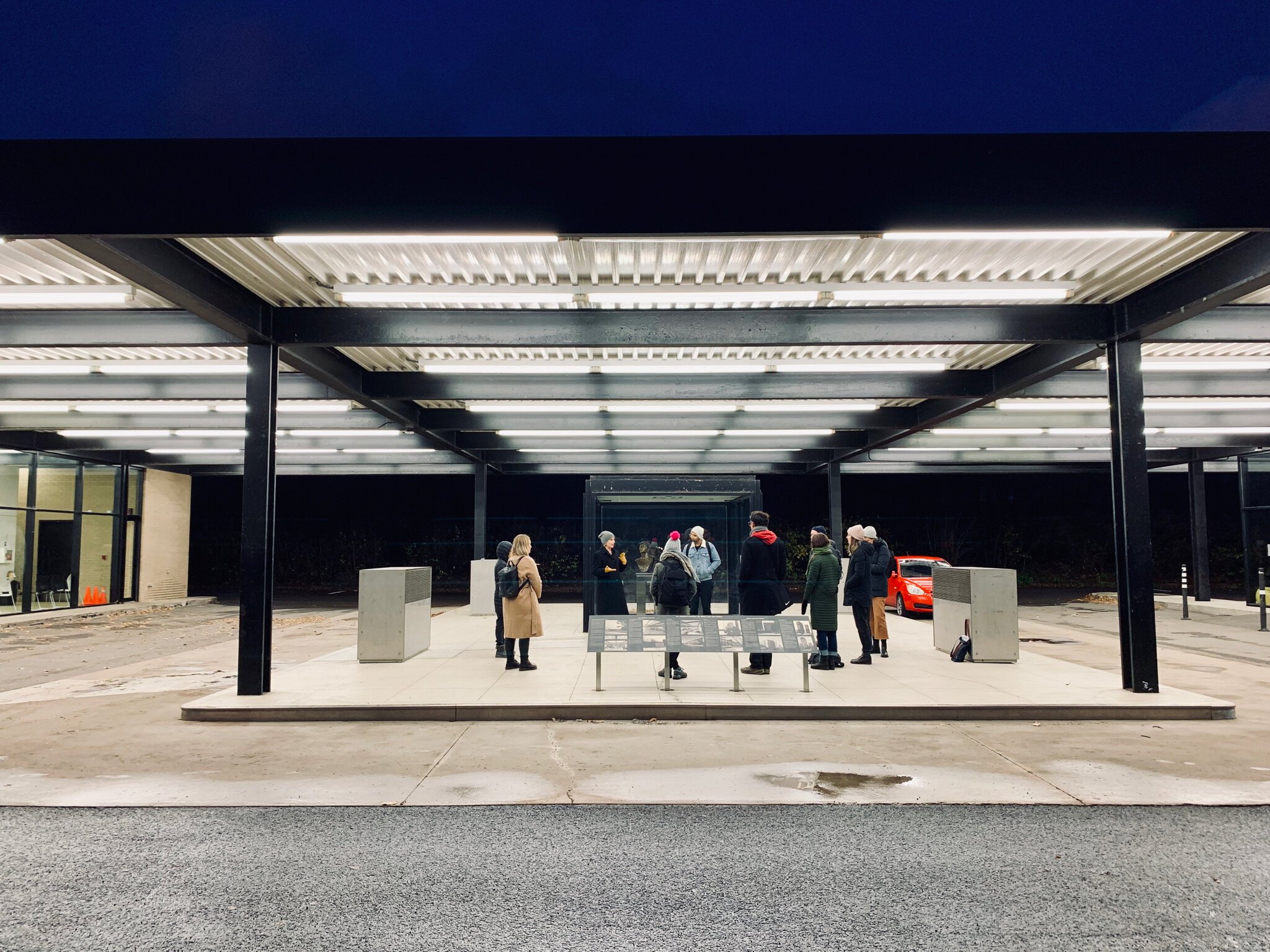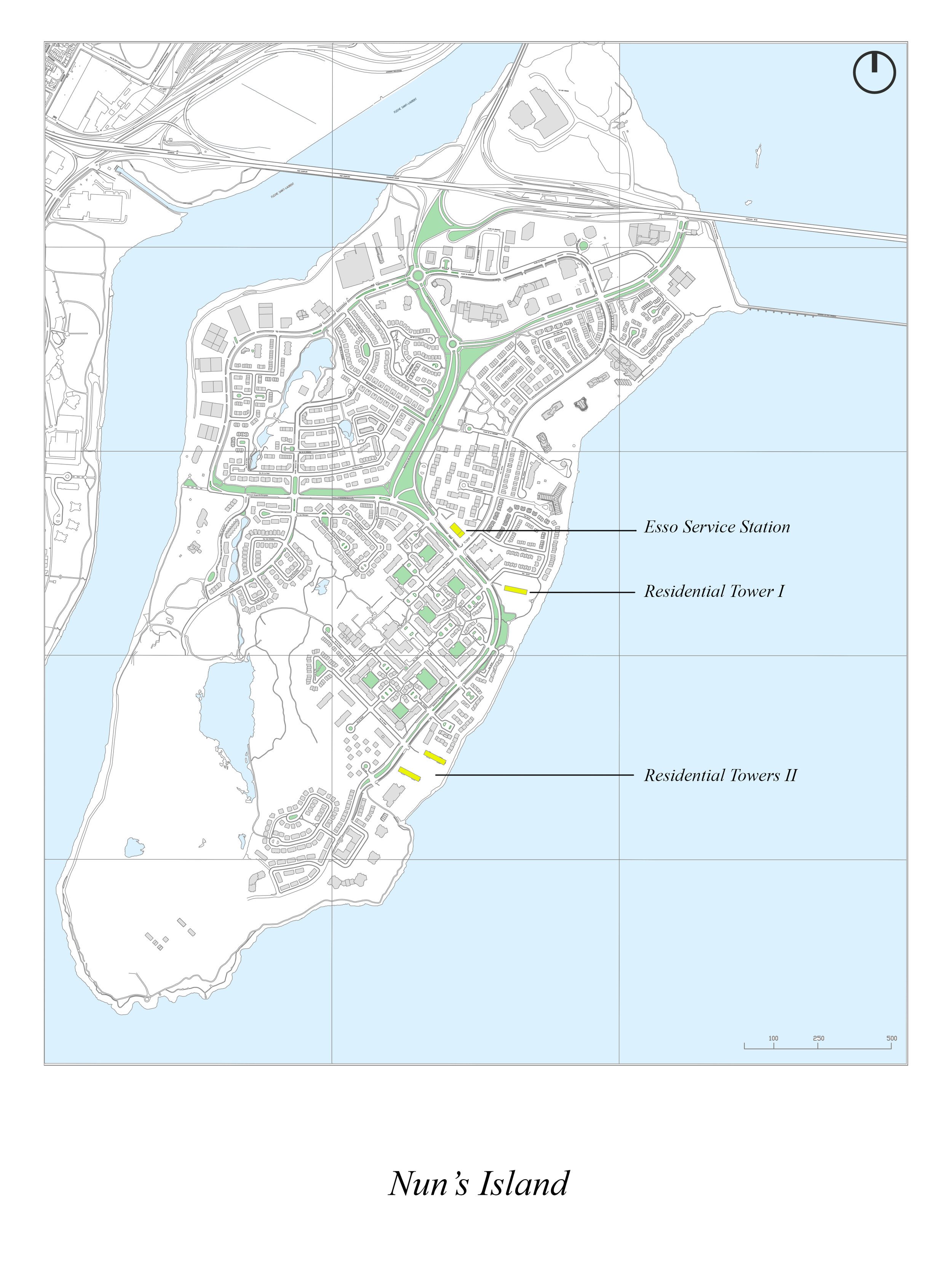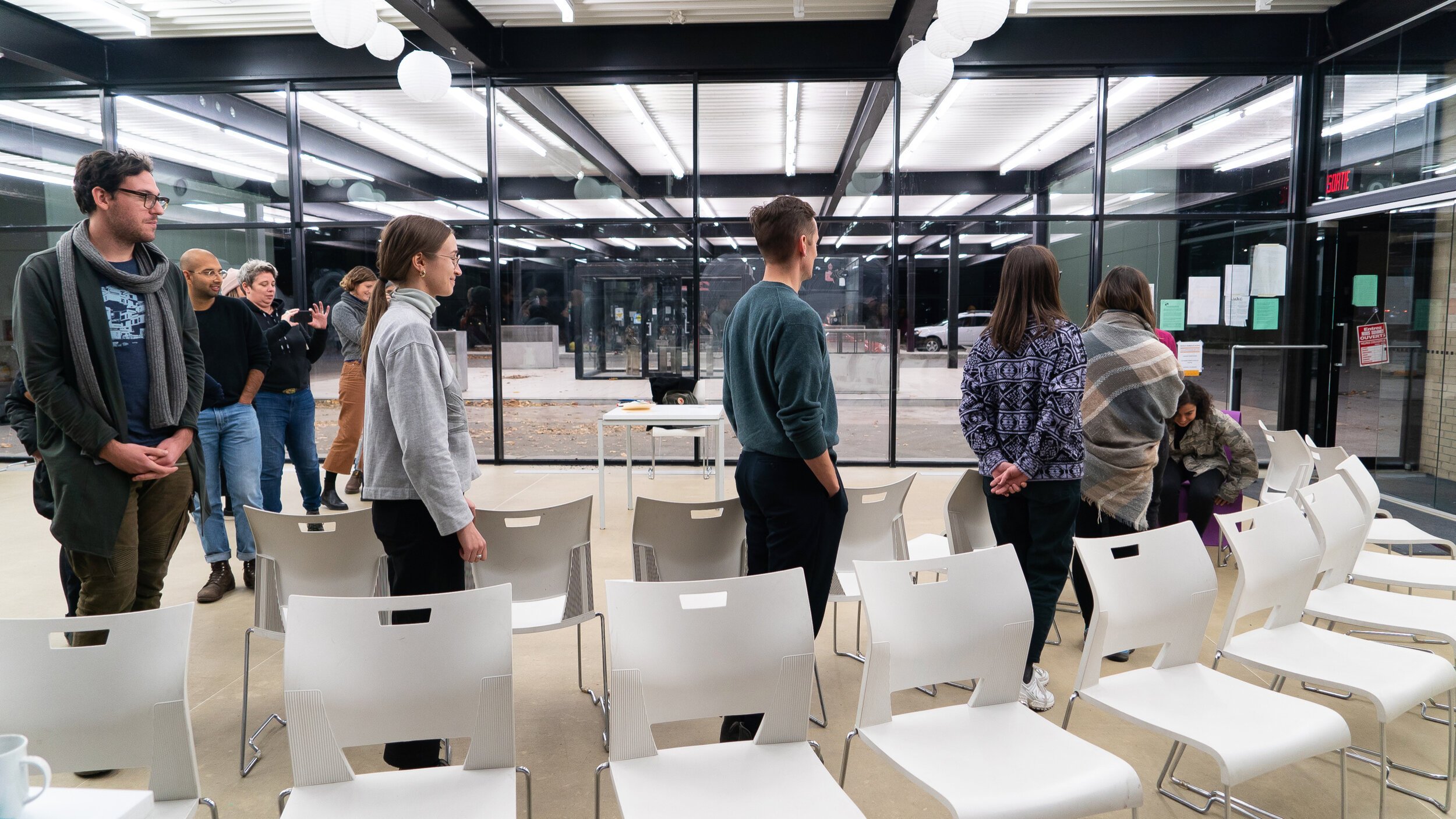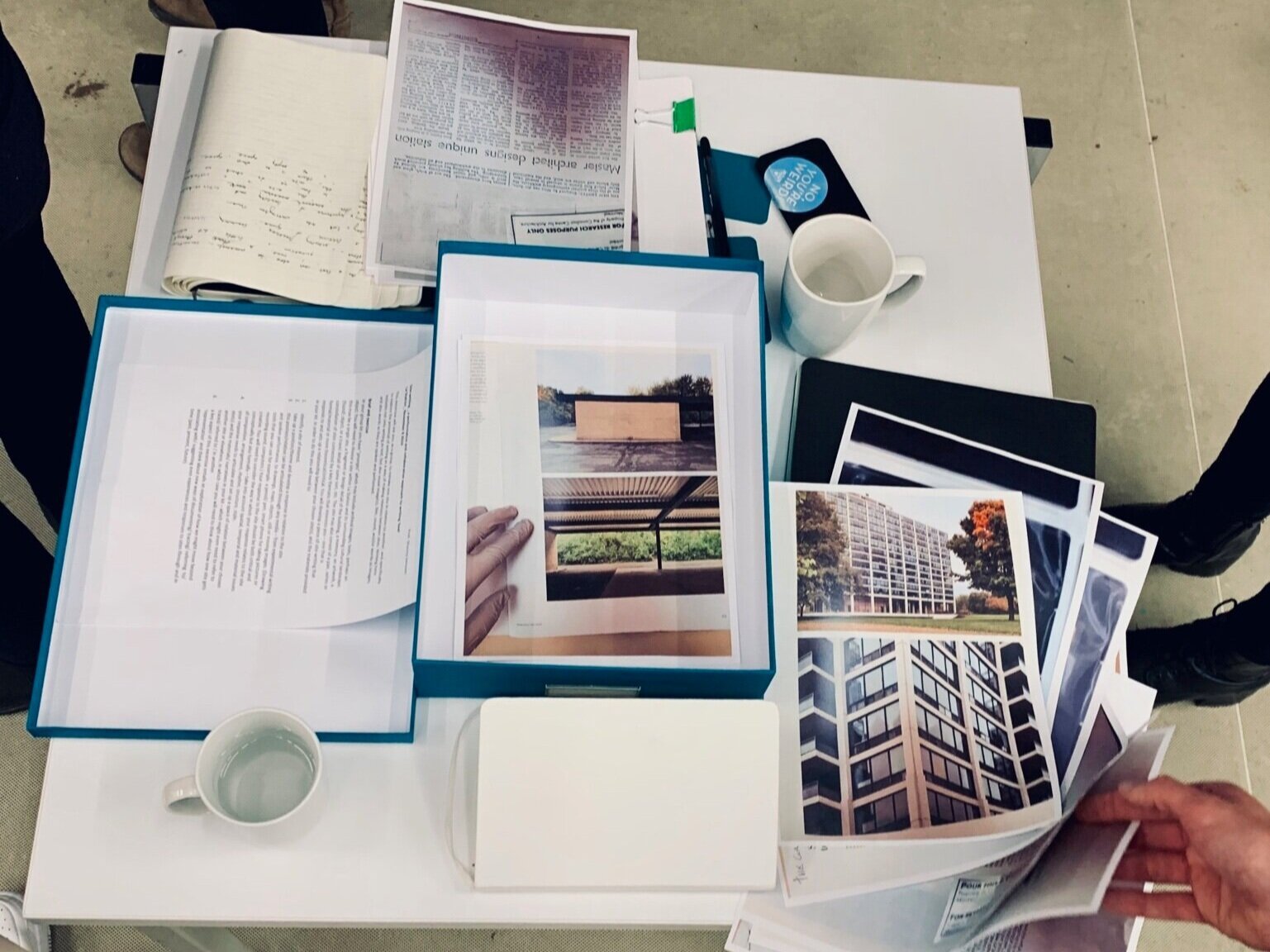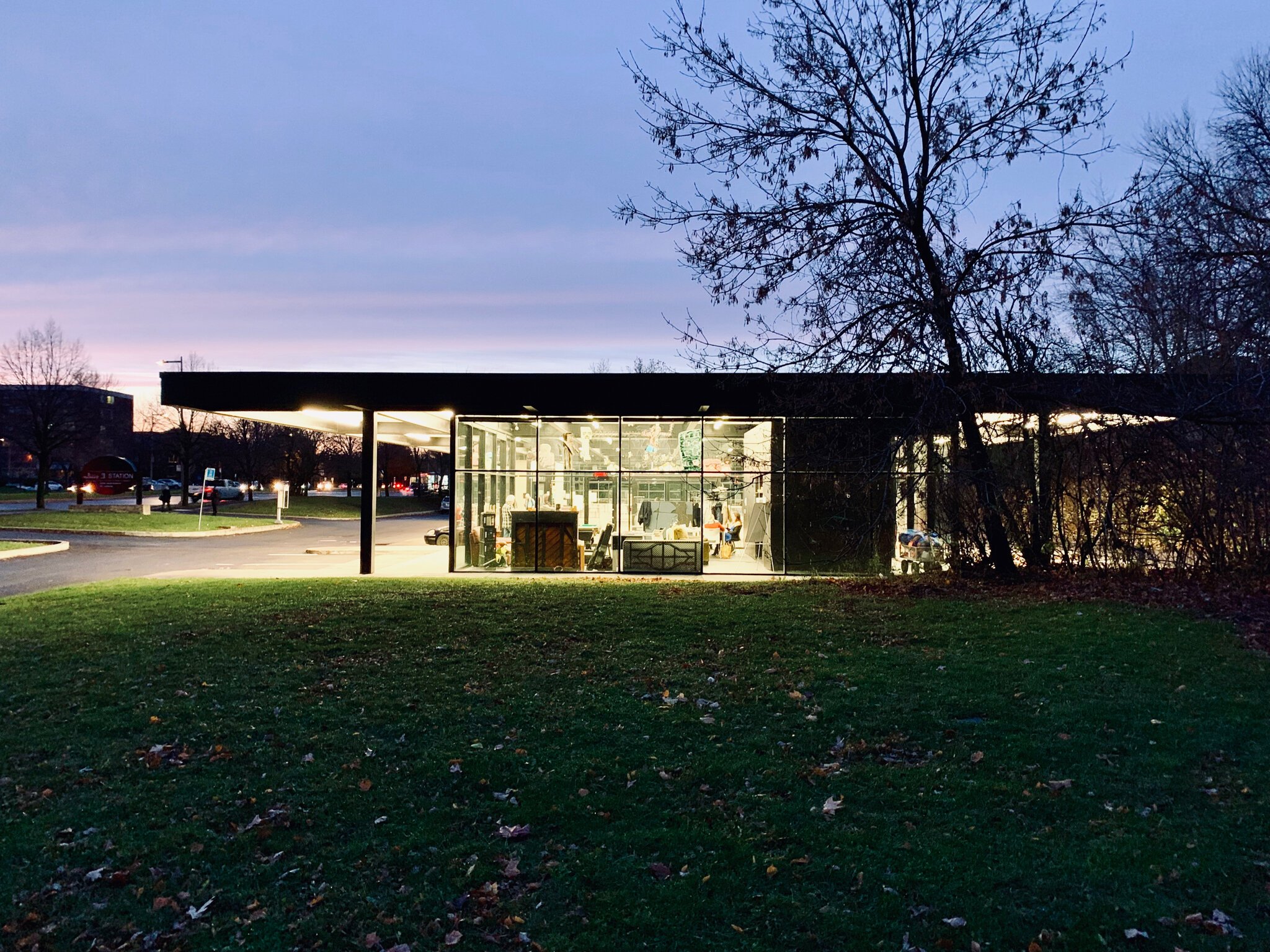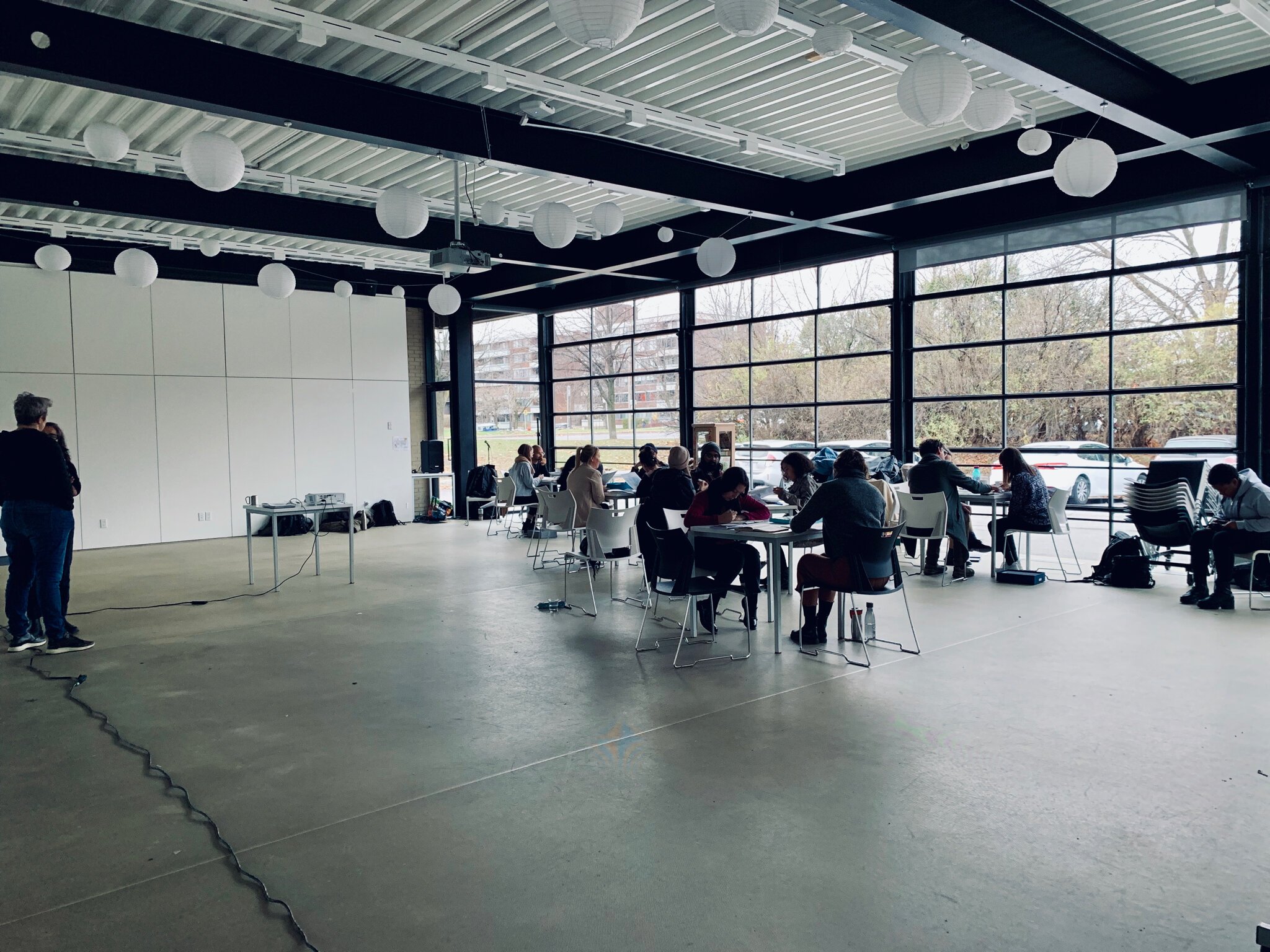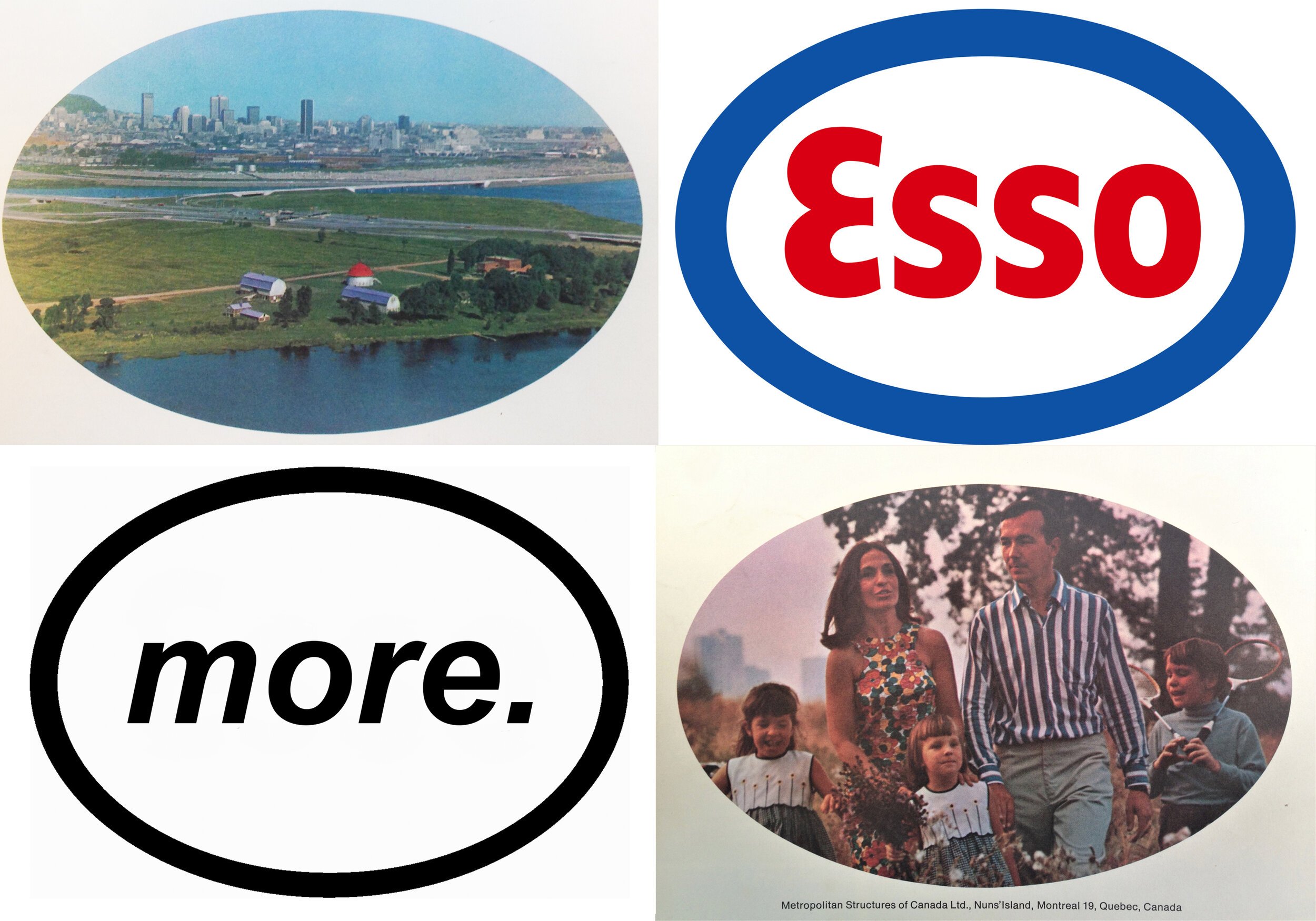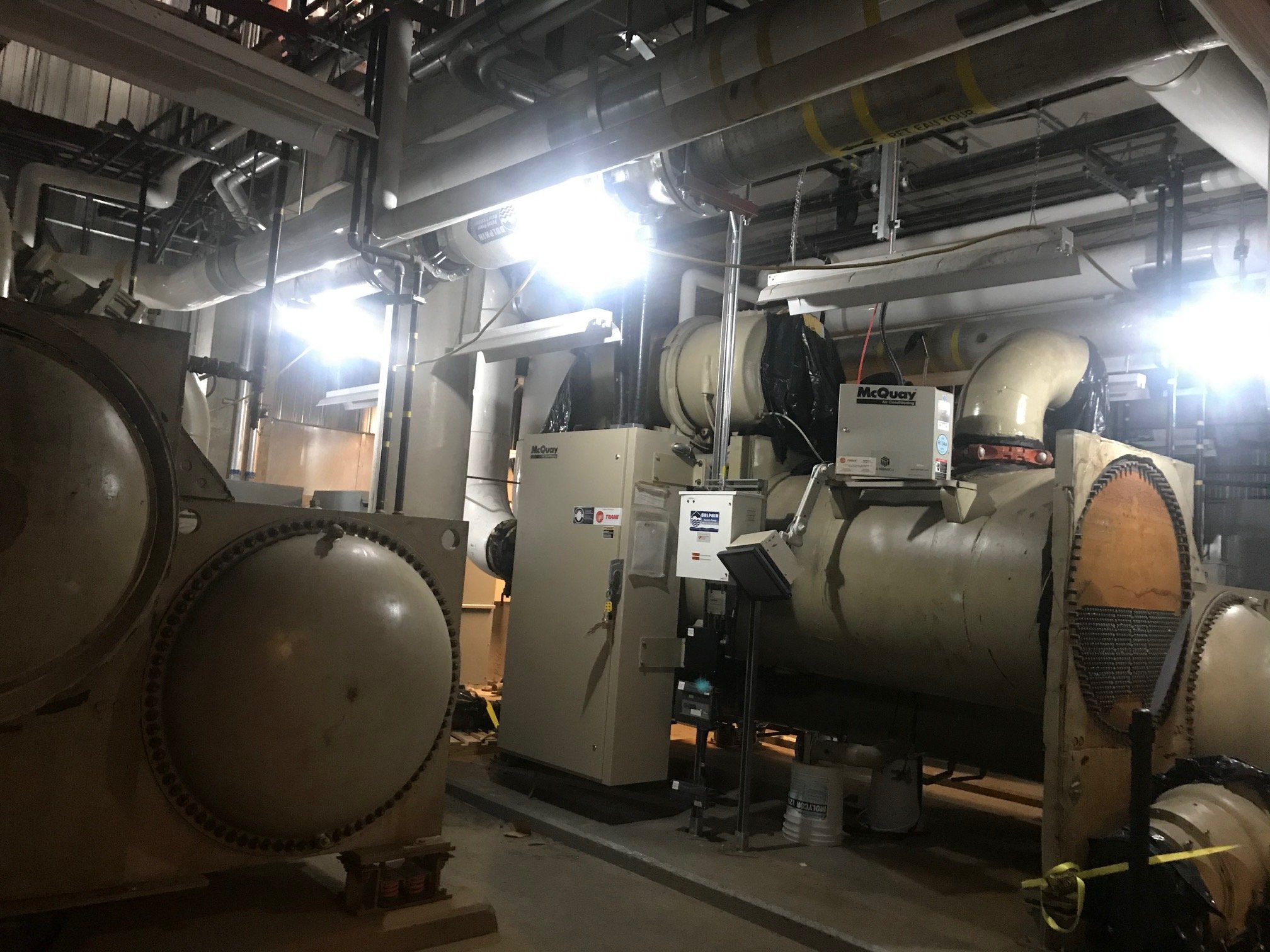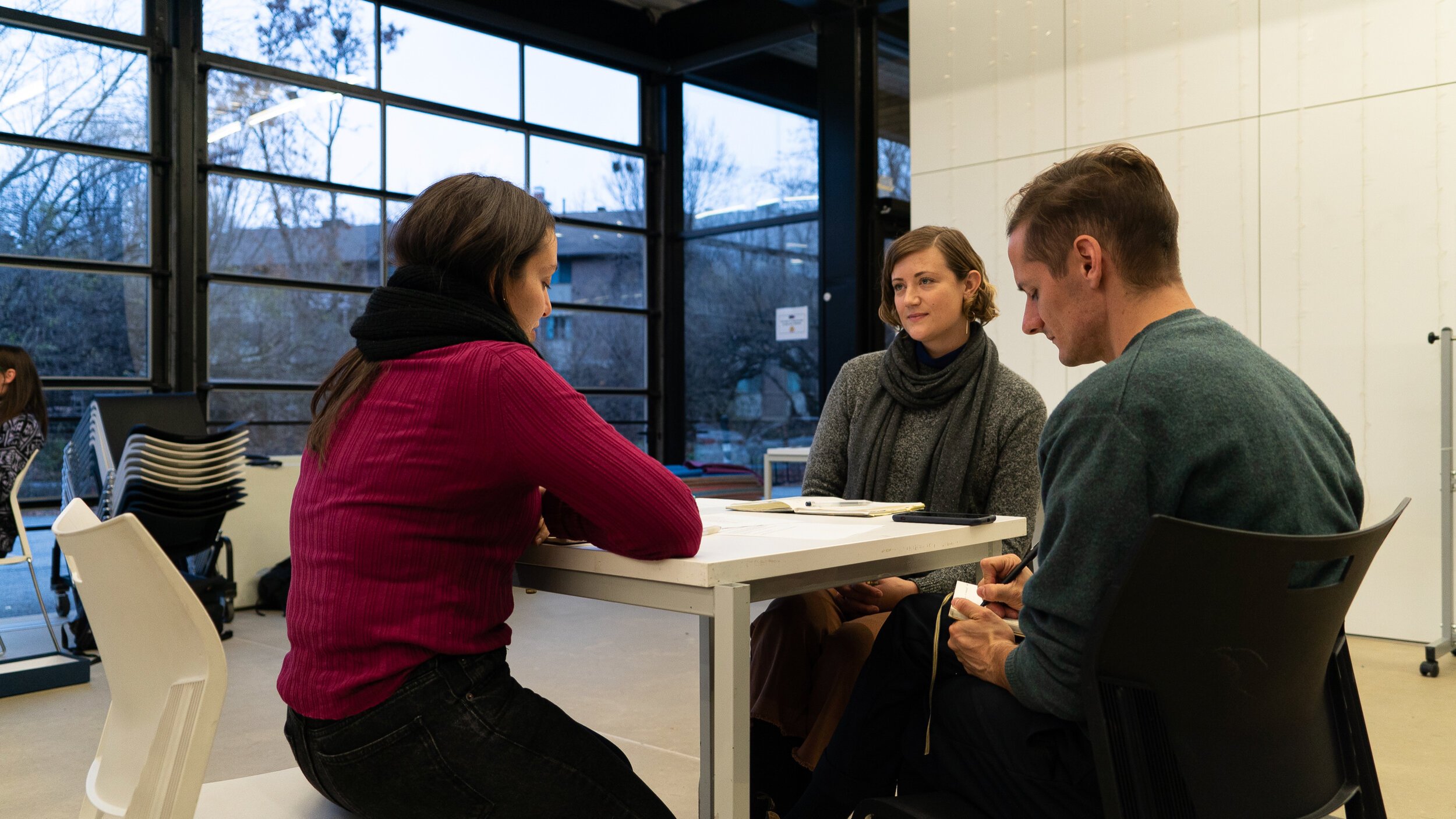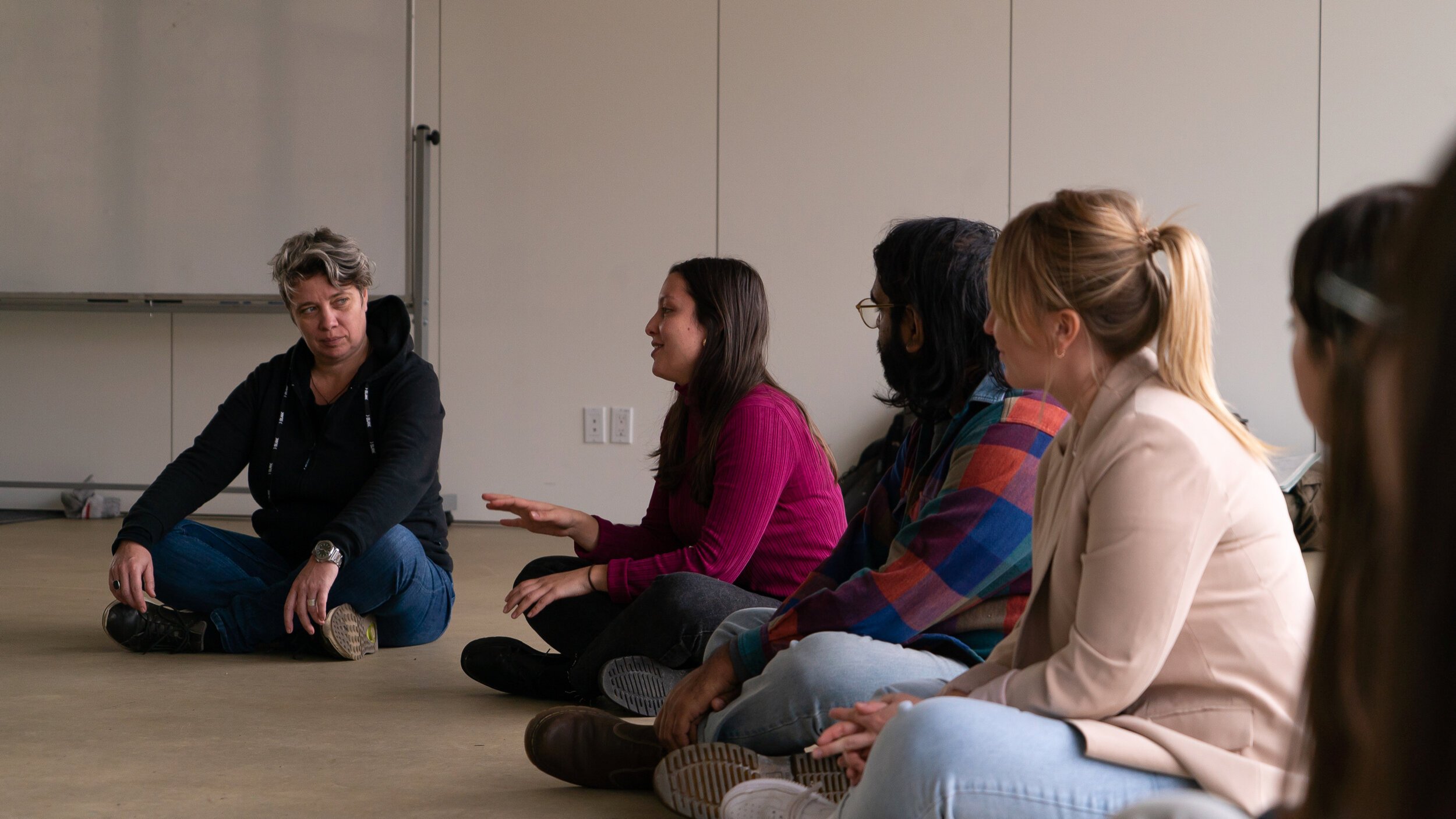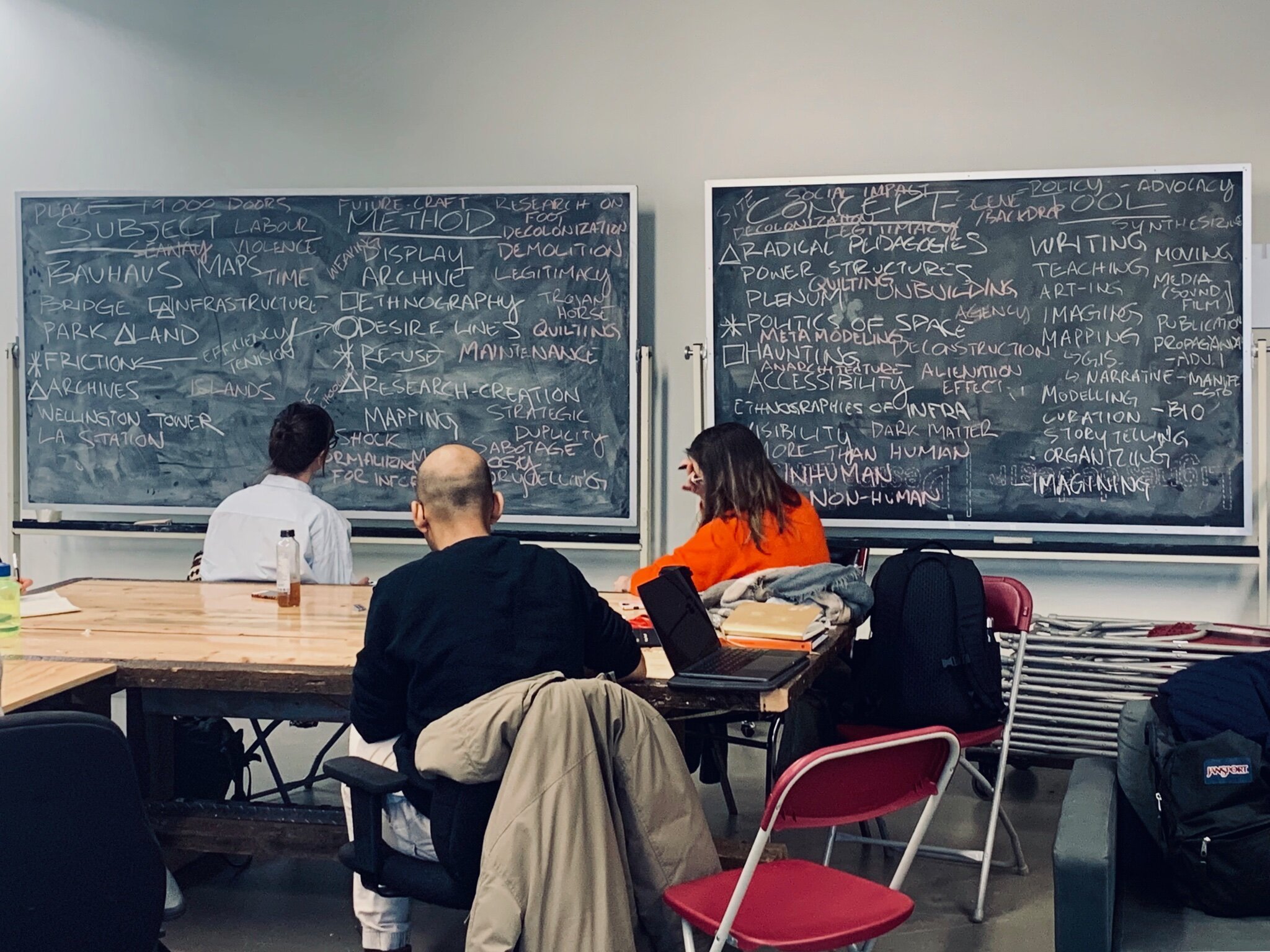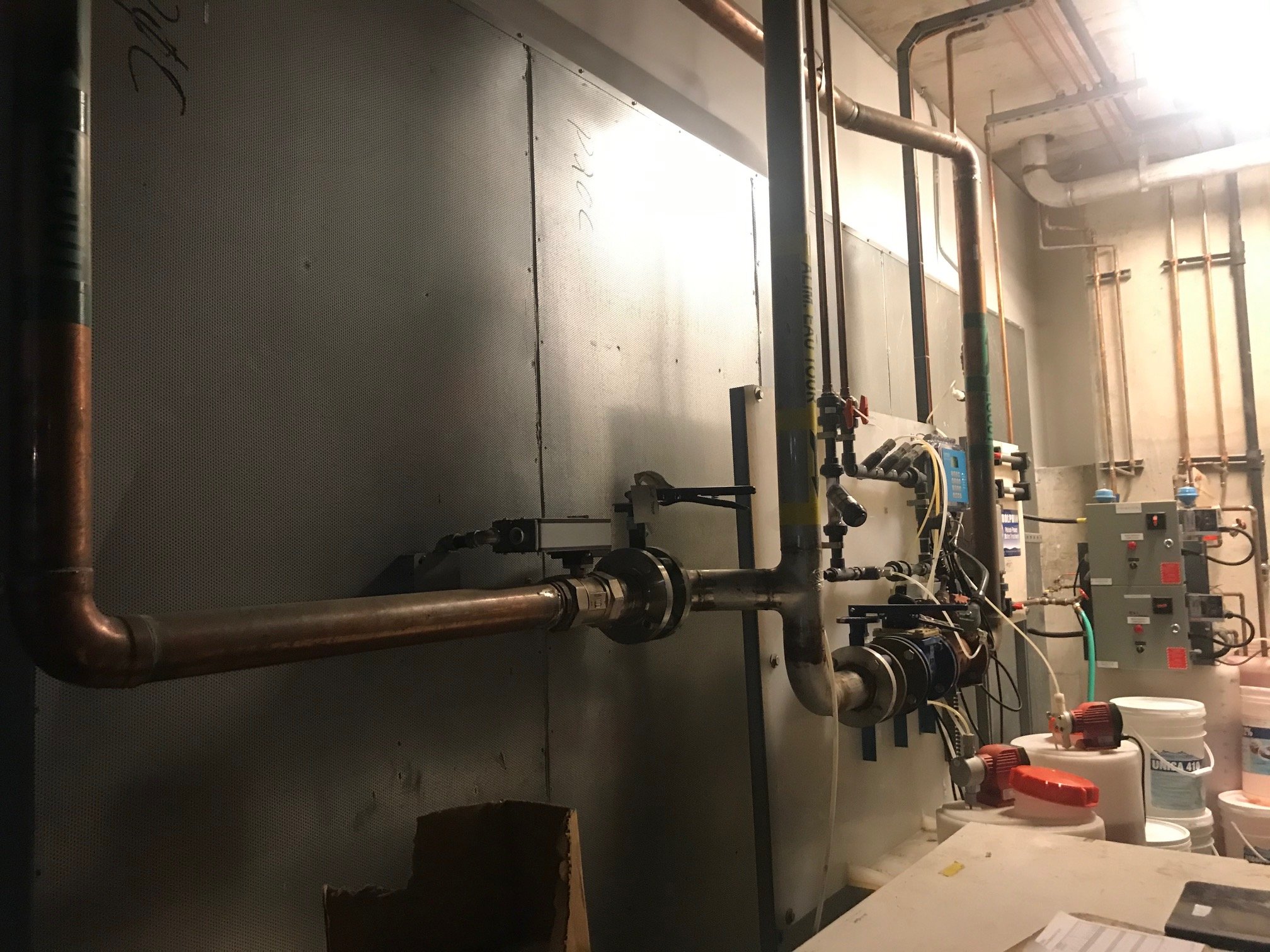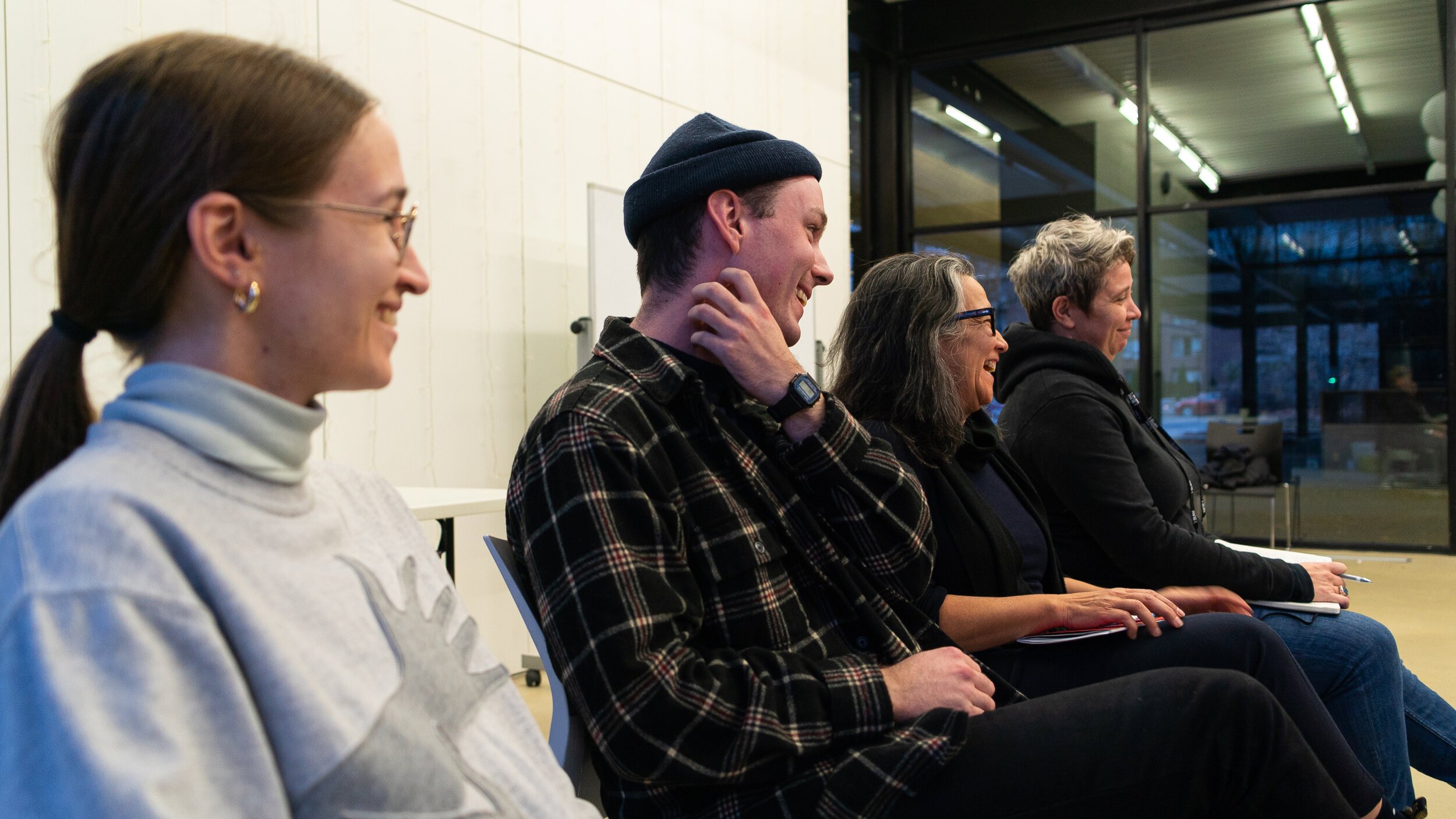“How can the Anthropocene be represented in such a way that not only catalyzes recognition but also mobilizes some kind of meaningful and organized response?”
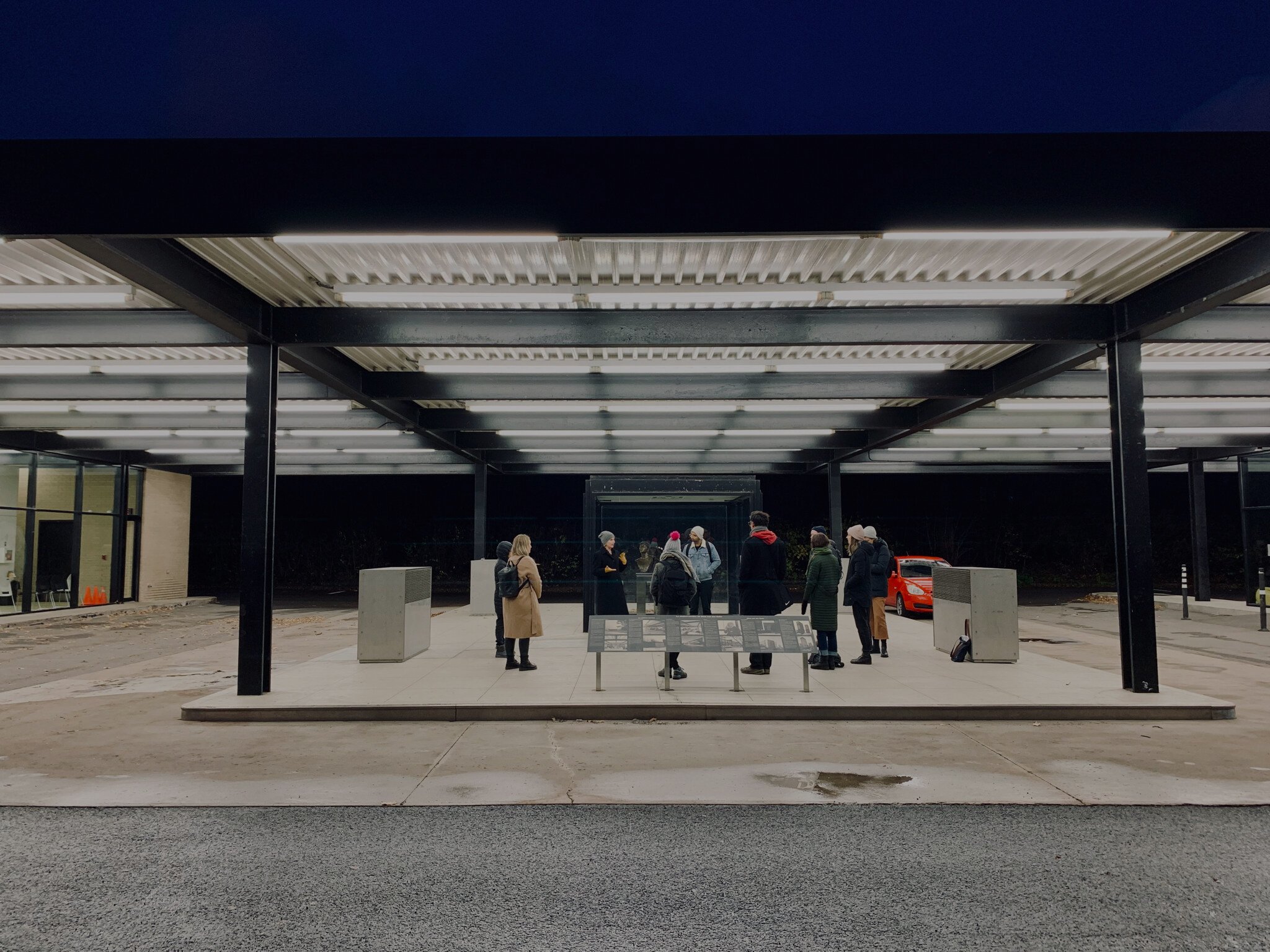
At the intersections of critical theory, environmental studies, artistic research, speculation, architecture, and design, this four-day field intensive used the Mies Van de Rohe designed gas station—La Station—as a starting point to investigate how we might rethink the monumental infrastructures of our carbon-based cities, economies, and modes of living. La Station affords a means to imagine a way of transitioning such sites into more just and livable post-Anthropo-/Capitalo-cenic futures.
Initially part of the broader masterplan for Nun’s Island, the gas station—with its historic link to Bauhaus— offers the opportunity to engage with issues of processual methodologies, experimental pedagogy, landscape, performativity, and expanded considerations of simultaneous and multiple living phenomena. Equally representative of a then idealized “carbon future,” the station also accommodates inquiries of environmental interferences and mutations at both micro and macro (molecular to planetary) scales.
Through four research modules, we propose a through-line between the pedagogical and design innovations of the Bauhaus and potential modes of transitioning into an uncertain future. The modules guided participants through Nun’s island’s development as a model for an idealized Modernist mode of citizenship (based specifically upon carbon-based infrastructures and economies). Using the island and gas station as a point of departure, we considered how the radical pedagogy of the Bauhaus allows us to rethink our research methods through, for example, research-creation, qualitative exploration, and ethnographic enquiry, offering tools to attune to the micro and macro scales of the local landscape and its social and technological entanglements.
By engaging with both past and current states and uses of the station through architecture, ecology, art and critical theory over four days of programming, we developed and proposed speculative futures for a world in transition. During the field intensive, participants engaged in lectures, discussions, and guided workshops to work with rather than on the site. We considered the site’s written and unwritten histories through (an)archival work, art-based research, ethnography, literature, and other creative and research-based practices; the multiple entanglements of species, their resiliencies, complexities, and adaptabilities; the physical reality of the island itself as host to such varied ecosystems; and Modernist applications and consequences of then-contemporary energy infrastructures, with projections towards (other) possible futures.
This intensive has been organized by Dr. Orit Halpern and the Curatorial Research-Creation Collective (CRCC), made up of Treva Legassie, Matthew-Robin Nye,and Karen Wong.

